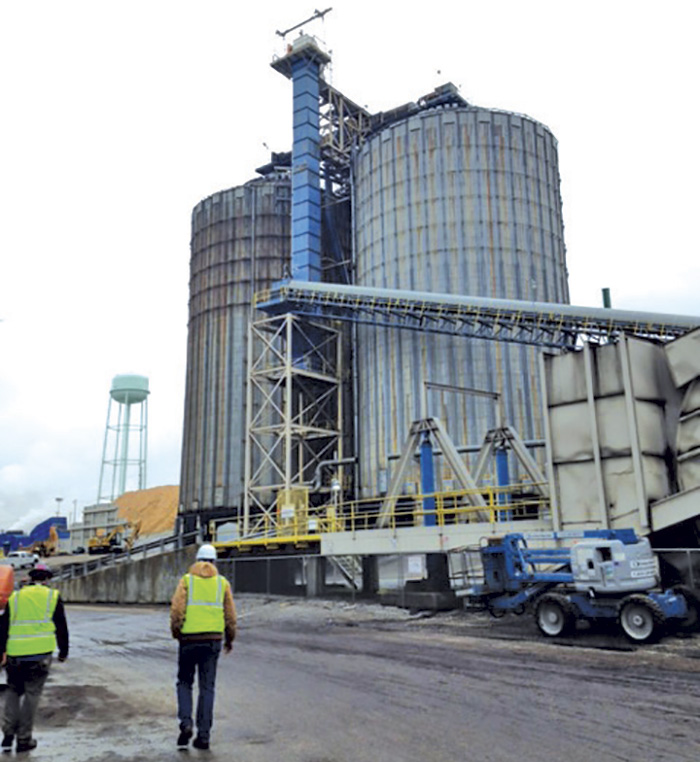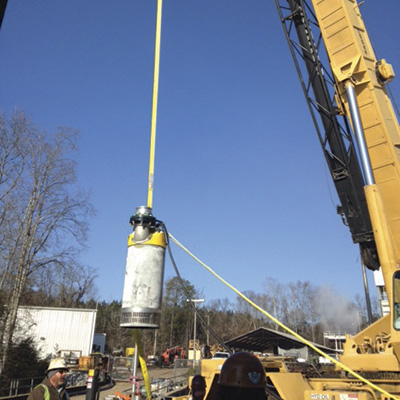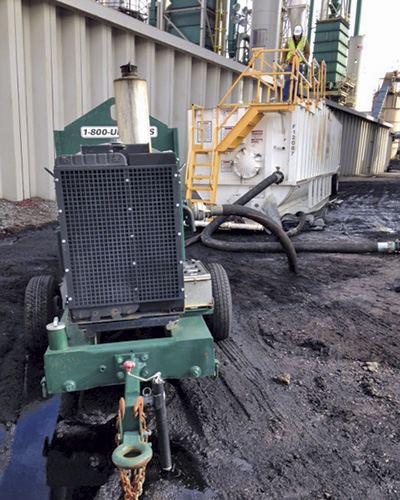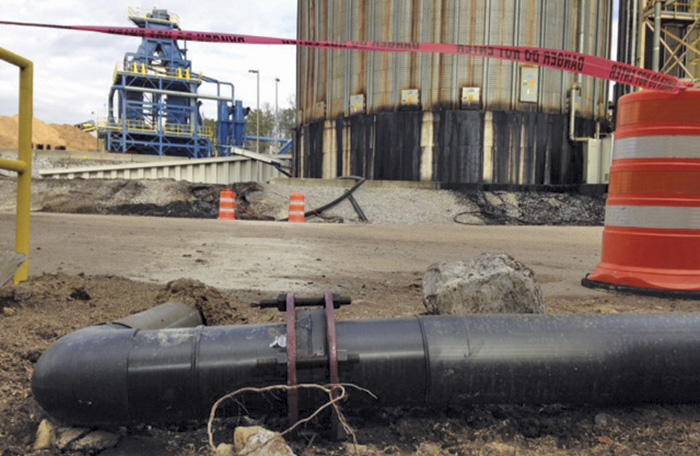An electric submersible pump provided the plant additional fire suppression when a hot spot caused a silo’s wood chips to combust.
IRONCLAD Marketing
04/27/2017
When fires occur, especially in biomass energy facilities, a quick response is critical to keeping workers safe and minimizing damage to the plant. Plant managers must ensure that a wide range of dependable equipment is in place to take action—from spark-detection technology to fire-suppression systems. Because fires occur even with the best systems in place, having a backup plan is important.
 Image 1. When stored in a pile for a long time, wood chips sometimes heat and create hotspots leading to spontaneous combustion. In January, one of the energy plant’s silos caught fire because of a hotspot, and the smoldering started to heat a nearby silo full of wood chips. (Images courtesy of Atlas Copco)
Image 1. When stored in a pile for a long time, wood chips sometimes heat and create hotspots leading to spontaneous combustion. In January, one of the energy plant’s silos caught fire because of a hotspot, and the smoldering started to heat a nearby silo full of wood chips. (Images courtesy of Atlas Copco) Image 2. A crane lowered the pump into the river near the biomass plant with custom 50-foot slings. The pump’s compact size met the crane’s requirements, coming in a couple of hundred pounds less than the crane’s 600-pound weight limit.
Image 2. A crane lowered the pump into the river near the biomass plant with custom 50-foot slings. The pump’s compact size met the crane’s requirements, coming in a couple of hundred pounds less than the crane’s 600-pound weight limit. Image 3. Tripp Brown, branch manager of the pump supplier in Mobile, Alabama, used a diesel pump to control the flow and pump water from the tank into a manifold that split the upper column into three separate lines to control water flow to different stages of the silo.
Image 3. Tripp Brown, branch manager of the pump supplier in Mobile, Alabama, used a diesel pump to control the flow and pump water from the tank into a manifold that split the upper column into three separate lines to control water flow to different stages of the silo. Image 4. The submersible pump moved water up the 70 feet of elevation from the river to the silo.
Image 4. The submersible pump moved water up the 70 feet of elevation from the river to the silo.
